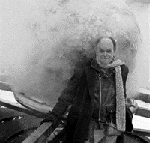
DNA Manifolds
Comparatively short sequences of DNA bases may be used as informational "manifolds". Many different layers of arbitrary information can be embedded into and retrieved from a DNA sequence within an existing gene without altering the number of base-pairs initially contained in that gene. The creation of such DNA manifolds alters bases comprising individual codons but not biological translation products (amino acids, peptides and proteins) of encoded genes. Furthermore, manifolds containing redundant copies of input data can be separately written into distinctly different DNA sequences within any gene or set of genes selected for modification. Information encoded into actual DNA is not ASCII code or picture data or other formats that DNA manifolds are explicitly designed to contain. Rather, it is a map of another DNA molecule, an imaginary one, that is coded into the DNA of a host organism. It is a map of a DNA molecule that itself holds a map of another. In fact, a single DNA molecule can contain maps of many other DNA sequences. A map of one DNA molecule is superimposed with the map of another which in turn, is superimposed with a map of another and this is superimposed with a map of yet another and so on.